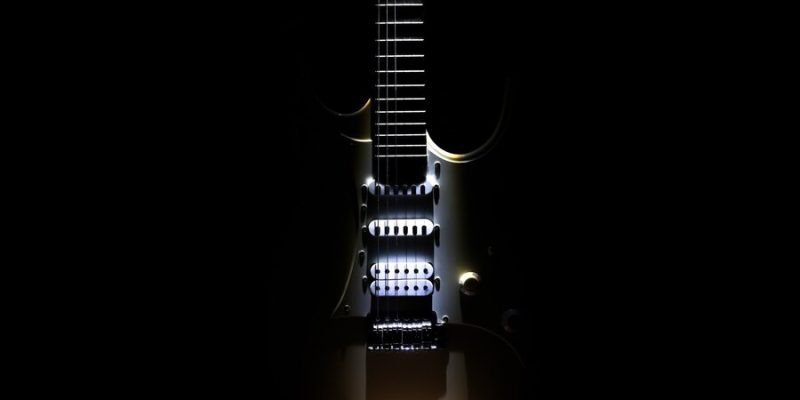For people who enjoy playing the guitar in Australia, the world of sound manipulation and enhancement is a vast and thrilling frontier, and one of the most versatile tools in this realm is the guitar pedal. These particular types of musical devices can transform your guitar’s tone, adding depth, texture, and effects, while an appropriate type of guitar pedal can elevate the way you play to new levels.
With a wide variety of guitar pedals available, selecting the right one for your particular requirements can be both exciting and challenging. As a result, if you are thinking about purchasing a guitar pedal, then you should continue reading this informative article, which can help you navigate this sonic landscape.
What Does A Guitar Effect Pedal Do?
Tiny, portable effects guitar bass and pedals are usually known as “stomp boxes” since they are foot-activated. Such effects pedals are inserted between the amp and the guitar- where the signal flow remains straightforward. All you have to do is connect the guitar to the input or pedal jack and later connect it to the output jack.
There might be instances when you have received multiple pedals. In such a situation, you have to patch all of them together and create your personal effects chain. In the case of pedal order, the main thing is experimentation. Guitar pedals make use of dials, buttons, and switches in order to control different parameters.
Different Types Of Pedals In A Guitar
There are various types of guitar pedals that work just as fine for anyone. But if you are a lover of details, here are some common types:
Distortion Pedal
Among popular guitar pedals, this one has to be the number one. Chances are you have heard about this one if you love electric guitars. It has a heavy sound that defines heavy metal and alternative rock music. The only drawback of this pedal is that it hides the true tone of the guitar.
Fuzz Pedal
The fuzz pedal is categorized under the “dirt” division of guitar pedals. It brings out extreme effects since it produces heavy metal rock sounds, which ultimately create buzzing sounds. In comparison to a heavy bass, it makes it difficult to distinguish the actual guitar tone. It is ideal for people who love busting the amplifier.
Overdrive Pedal
Just like the distortion type, the overdrive pedal is best for its versatility. Sometimes, it is also confused with the former since it produces a similar type of gritty and crunchy sound. So, what makes it different? The latter is more sustainable and regulates most of the guitar and amplifier sound.
Reverb Pedal
When it comes to combining an echo effect, reverb pedals work best, although the sound is more strategic. Generally, amplifiers have knobs that control them. However, owning a reverb pedal can mostly give out a professional sound with clean guitar tones. It effectively curates an ambiance for your listeners, whether you are playing a full rhythm or a note.
Chorus Pedal
Another significant yet complementary special effects guitar pedal is the chorus pedal. In simple terms, it creates one pluck of a strum or string of chords as if it’s replicated by other guitarists. Moreover, the outcome creates a swirling, shimmering effect, which is quite similar to guitars having 12 strings.
Flanger Pedal
Have you heard of a Wah pedal? Well, that’s what the flanger sounds like. However, its sound does not travel that far. Moreover, it resembles a phaser that has the potential to produce swooshing sounds, which eventually makes the pitch go up and down- as needed.
How To Choose The Right Guitar Pedal?
Learn more about three top tips to consider when choosing an appropriate type of guitar pedal.
- Define your musical objectives before you choose a guitar pedal
- Consider the pedal chain you want to use in your music
- Ensure a high level of quality and appropriate features
A. Define Your Objectives
Before you delve into the world of guitar pedals, it is essential to take a moment to define your sound objectives as well as your preferences. By considering the genre of music you enjoy playing, the style you want to achieve, and the specific effects you are interested in, you will be able to select an appropriate type of guitar pedal for your personal requirements.
Regardless of whether you are looking for rich overdrive, ethereal delays, or dynamic modulation, understanding your sound objectives will guide you toward the right type of guitar pedal. If you are aiming for a punchy, crunchy sound with added sustain, overdrive, and distortion, then pedals are your go-to option.
These pedals can range from mild, bluesy overtones to heavy, saturated distortion, making them essential for rock, blues, and metal genres.
B. Consider The Pedal Chain You Want
Furthermore, the order in which you arrange your guitar pedals can have a considerable impact on the overall sound that you are able to create, as well as the music you want to play.
Ideally, you should begin with foundational effects like overdrive/distortion, compression, and EQ pedals at the beginning of your chain, while these can shape your core tone. However, modulation and time-based pedals are typically placed in the middle, while ambient effects like reverb often come at the end.
C. Quality And Features
Lastly, making an investment in a high-quality guitar pedal is essential if you want to achieve the best possible music as well as ensure durability. You must look for pedals made from sturdy materials that can withstand the rigors of live performances and transportation in Australia, while a well-built pedal will last longer and provide more consistent performance than a cheaper make or model.
Summing It Up
Therefore, to sum up, choosing the right guitar pedal is a pivotal step in shaping your unique sonic signature. By defining your sound objectives, considering your pedal chain, and prioritizing quality and features, you will be able to confidently select a pedal that enhances your playing and brings your musical vision to the next level.
Read Also:
















